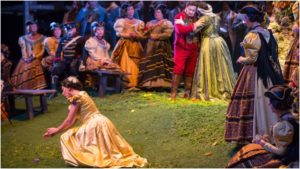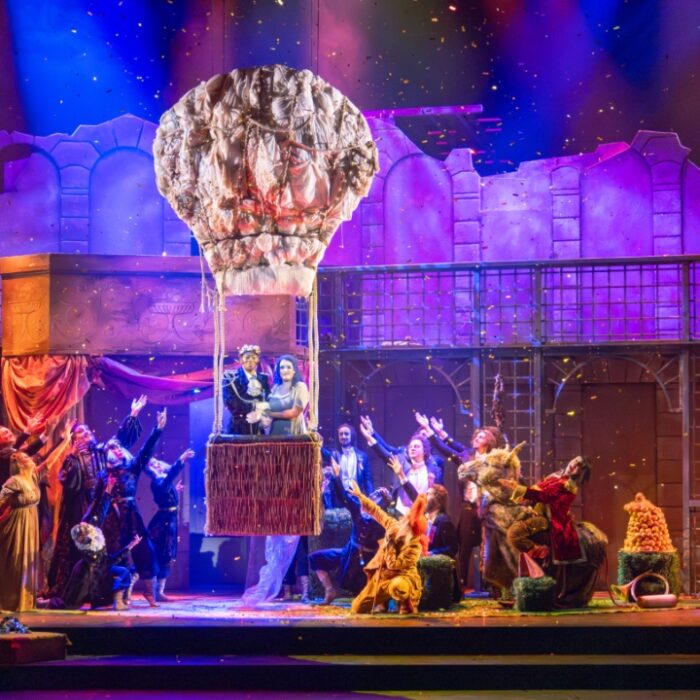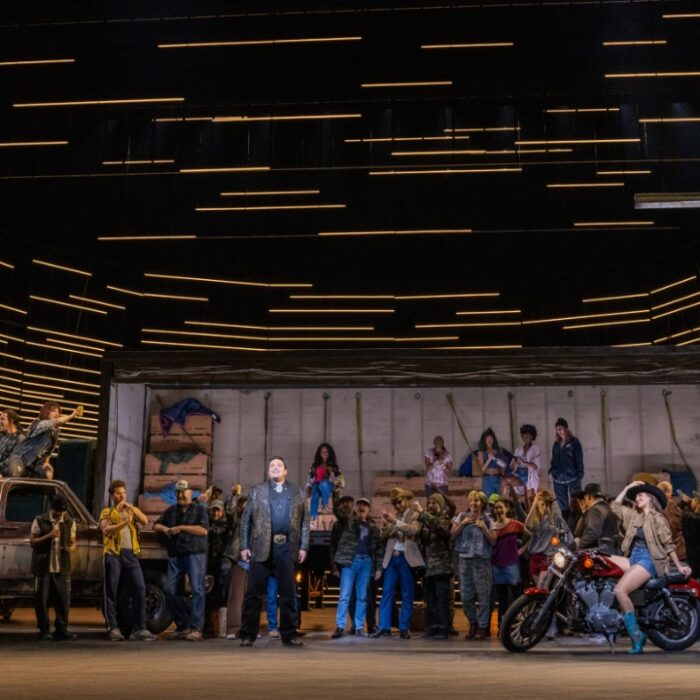
Royal Opera House Muscat 2017-18 Review: La Sonnambula: Rosa Feola Triumphs As Famed Bellini Heroine
By Yige LiBellini’s “La Sonnambula” relies heavily on its star soprano for a satisfactory performance. Written to showcase Giuditta Pasta, one of the greatest divas of the time, the title role of Amina is known for its technical challenges which require the soprano to have complete command of long legato lines with great breath control. It also requires attacking trills and fast notes with a superb florid technique.
And the leading lady also has the task of making the questionable plot believable for everyone on and off stage. A successful performance would be like what Glinka described when he watched the opera during its premiere season, “[…] in the second act the singers themselves wept and carried their audience along with them, […] tears were continually being wiped away in boxes and parquet alike. […] I, too, shed tears of emotion and ecstasy.”
A Major Trap
In a sense, it is a certain kind of “trap” for the leading soprano. Sometimes, a soprano can showcase vocal fireworks and fall short in presenting the drama. As audiences, we are impressed by the superhuman technique yet laugh through it all. In the end, the whole thing would feel more like acrobatics than art. In some other cases, a soprano may be able to tap deeper into the drama, but not manage the vocal demands.
But, this reviewer is overjoyed to report from Muscat after Rosa Feola’s role debut (run, technically the second performance,) that we can now add one more name to the shortlist of sopranos who can truly create something powerful out of “La Sonnambula.”
Making It Work
One of Rosa Feola’s greatest strengths is the ability to combine restraint and passion. And nothing illustrated this better than her heart-melting final sleepwalking scene. When Amina found the violet that her betrothed Elvino had given her on the ground, she squatted down and stretched out her hands toward the flower without touching it; it’s as if she wanted to caress it. But she dared not and began a seamless rendition of “Ah! Non credea mirarti.” The tension in her hands and in her voice complemented each other and together created a striking scene. Feola’s legato phrasing followed just as how Bellini marked–“Andante cantabile.”
Beautifully lyrical and in a moderately slow tempo usually associated with “Andante,” her singing was like a river of sound, subtle yet always sustaining a forward flow. While sustaining the smooth line, Feola never sacrificed the clarity of words or her way of coloring the text imaginative. She murmured about the “fiore!” and one could hear the lacrime nella voce. Unsurprisingly, her careful way with words made the extensive recitative before the aria (about five-minutes long!) satisfying, of which most of the music didn’t lie in the notes but the articulation and rhythms of the language.
This also applied to the final cabaletta. Even though not all the coloratura runs were precise, Feola succeeded in giving emotional meaning to every small note, especially in the repetition, as she applied interpolated ornamentations.
But I will admit that not all of Feola’s singing was up to the extremely high level she achieved in the finale. Despite some miscalculations here and there (understandable for a role debut) and some slight intonation problems along the way, overall, this was still a memorable performance. The role of Amina suits her skill and temperament well enough that I think it will stay in Feola’s repertoire for a long time.
An Army of Veterans
Elvino was sung by tenor Antonino Siragusa who had made his role debut years ago. He has done the opera often since, with many renowned sopranos (including Patrizia Ciofi, Sumi Jo, Eva Mei, and Anna Netrebko) and also did this production when it premiered during the 2006-07 season. From his singing, one could easily understand why he has been so frequently cast in this role. His voice projects well with an easy top and enough agility to get through this music. Though the voice might be a little metallic and monotonous at times, he employs the dynamic changes wisely for great dramatic effect.
Taking on the role of Il Conte Rodolfo was bass Nicola Ulivieri who is a veteran in this role, having sung it for the past 20 years. With a robust bass voice, he managed to balance the nobleman and the playboy part of Count well. Both his flirting with Lisa and his resistance to taking advantage of Amina sleepwalking felt believable.
Soprano Barbara Bargnesi sang Amina’s rival, Lisa. She provided credible skills to her two arias and also the “semi” part of Bellini’s opera semiseria during Lisa’s exchanges with various other characters. Rounding out the cast were Daniela Innamorati singing Teresa and Seung Pil Choi, a powerful bass, who sang Alessio, Lisa’s suitor.
Under the baton of Antonello Allemandi, the Orchestra and Chorus of Fondazione Arena di Verona were serviceable though without too much imagination.
Paying too Much Tribute to Legends
The decade-old production by Hugo De Ana (who also did the set and costume design) was directed here by Filippo Tonon.
A tribute to the 1955 Visconti production at La Scala, Hugo De Ana created a very poetic atmosphere that suits this opera’s pastoral nature well. Yet, from time to time, the constant projection changes were tiresome. There was even a portrait of Maria Callas (with a candle in front of it!) during the sleepwalking scene at the end of Act one. Any true opera lover is familiar with the recording of Callas’ Amina, and this almost looked like an invitation to “compare” the current whomever on stage with La Divina. I, for one, could not stop hearing Callas’ voice in my head which was definitely the last thing I would want in a live theater. Every singer is unique and should be appreciated and judged by what he or she is on stage rather than what he or she is not. I came to the theater not to be haunted by the dim ghost of La Divina (I prefer to do that in my living room), but to experience the vivid soul of Feola.
The lighting design was by Paolo Mazzon. Overall, it enhanced the dramatic flow, in line with everything else in the production. However, it seemed weird that whenever singers went downstage, they were in shadow, even when they were singing and should have been the focus. I could not tell if it was the design itself or due to the limitation of this particular theater. Leda Lojodice provided very elegant choreography.
The atmosphere at Royal Opera House Muscat was unique with a mixture of local and international audiences. Decorated with traditional Islamic patterns, the theater has a size and acoustics that match perfectly well with bel canto operas.


